The ‘phygital’ revolution. MWC 2018.
Mobile World Congress (MWC) brings the global leaders in digital products and services together, so surely this is THE place to explore the future of brand experiences?
With an estimated 1bn Euros spent on brand experiences over four days, MWC is arguably now one of the most significant live events on the planet. I’ve seen exhibiting brands peak, plummet, merge and multiply over the last 20 years.
As the definition of ‘mobile’ is repeatedly challenged, the landscape of connectivity, communication, computing and creativity shifts beyond recognition. These days we’re all reliant on a slew of devices to carry out the most menial of tasks. As a result, we spend more time interacting via device than in person.
Throughout the last decade, this trend was replicated at events, with digital surfaces as the medium of choice for brand experiences. At first they were magical (remember the iPad debut?), but sheer ubiquity has taken away that magic. Surely events should be spaces for the exact opposite, since they’re unique social opportunities, meetings of minds and multi-sensorial moments in time?
Thankfully the tide is turning. There’s a welcome focus on digital content as an ‘enabler’ of physical experiences. This shift away from screen-based engagement and towards immersive, sensorial experiences lets us make more intuitive connections to stories, to brands and to each other. Digital isn’t dying. It’s just being leveraged to complement and amplify our physical interactions.
Soon there won’t be any delineation between digital and physical design. The relationship between space and device(s) will be invisible. The smartest brands (and smartest agencies) know this and already breathe it into their brand experiences. It’s already clear in product/service design (iPhone/iOS) and it’s beginning to spread through retail (Amazon and their Whole Foods acquisition), but it’s not yet terribly visible in the live event space.
Technology offers us a host of innovative media to boost experiential on an emotive and educational level. So how did MWC exhibitors push the boundaries of experiential to tell their stories? What does the future hold to integrate digital technology into live event experiences?
Art attack.
There’s a slow but increasing acceptance that B2B events should still be fun and engaging. No other exhibitor took this non-corporate, consumer-centric view as far as T-Mobile. Their totally immersive experience was more like a futuristic art gallery than a trade show booth. Each perfectly crafted demo felt like a different artist’s exhibit, and each one expertly blended physical and digital: RFID object recognition triggered videos, TOLED screens layered over a smart-home model, a carousel pinwheel with a digital centrepiece, and a large vertical screen with content crafted to falsify perspective and warp reality. This is a creative business aligning itself with creative people via creative pursuits.
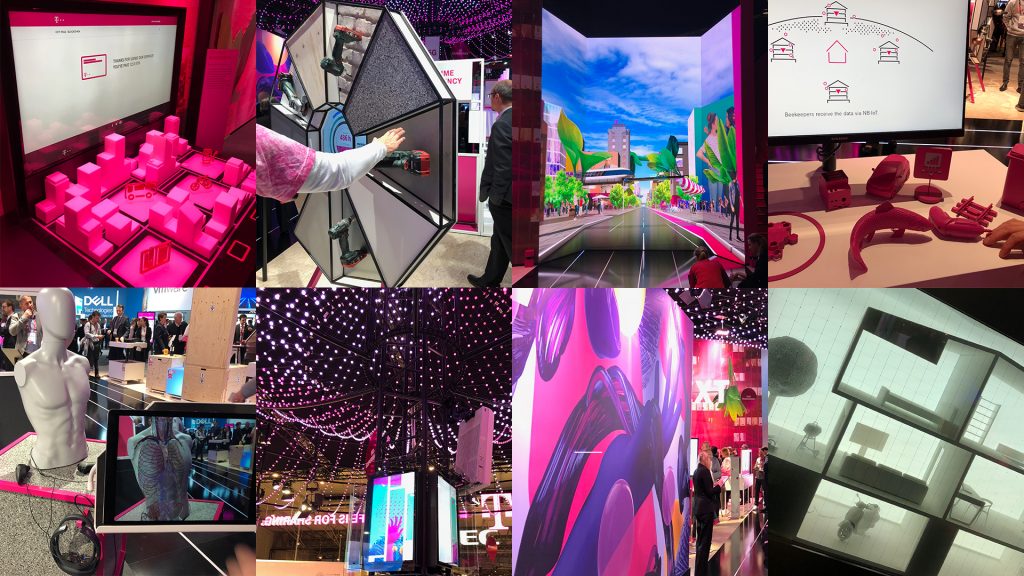
Next realities take 1. Virtual reality.
VR can be deeply immersive, but it’s actually a pretty lonely user experience. For me, VR’s place in live events is highly questionable. Maybe it’s the oft-overlooked content, maybe it’s the user vulnerability, or maybe it’s the clunky set up and dressing process that takes the shine off. Of course, there was the usual chaotic queue for Samsung’s VR zone, but after two system reboots and a frustrating 15-minute wait to ‘calibrate’ and ‘adjust’ my goggles, I gave up without even setting foot on their virtual snowboard. A telling reminder that this medium is routinely underwhelming. Still, it felt like 40% of exhibitors had some kind of VR demo, so it’s not going anywhere just yet.
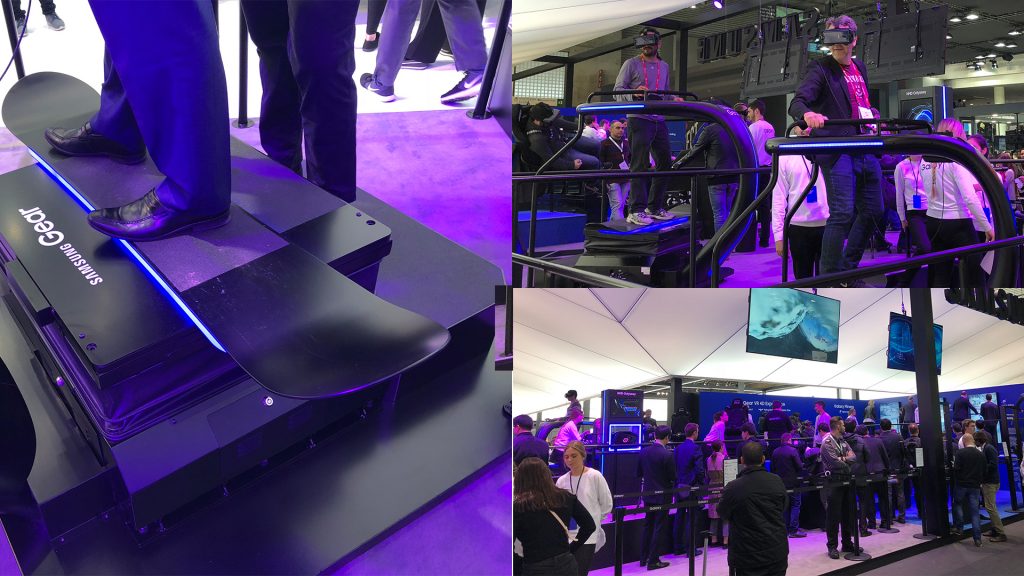
Next realities take 2. Augmented reality.
By its very nature AR augments reality, so this blend of physical and digital is fundamentally more in line with live event marketing. It’s site specific; the more bespoke the physical space, the more powerful the experience. It’s social: the medium enables a group of people to have concurrent communal experiences. AR is a storyteller’s dream because it complements the physical space and amplifies it with digital, allowing us to each see the world differently. DoCoMo, Google and T-Mobile all used AR well, but there’s a long way to go before we see its full potential.
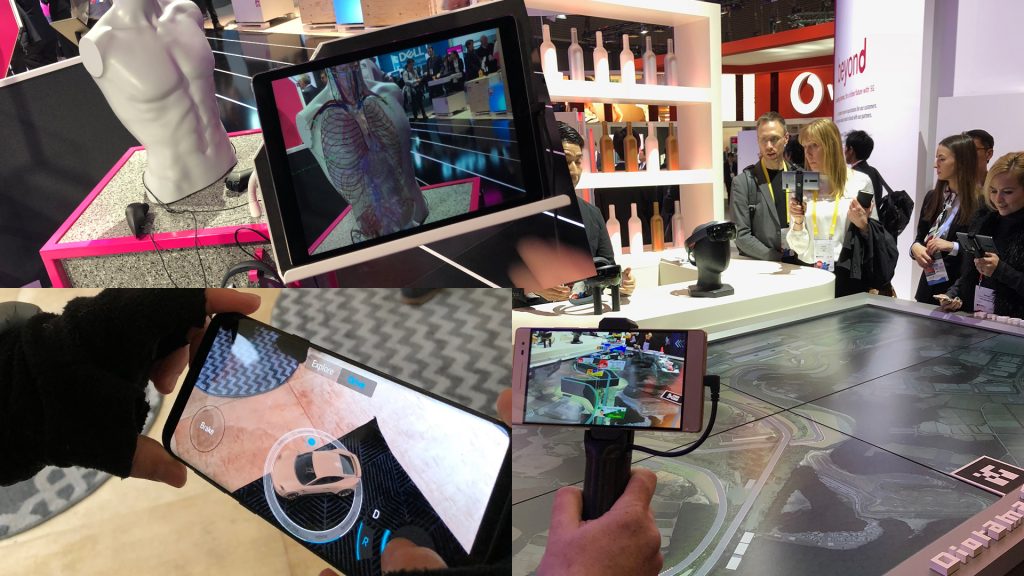
AI cometh.
Artificial intelligence was a hot topic at MWC. Soon we’ll see machine learning threaded into all sorts of devices, but it’s still not deployed as an active component of live event brand experiences. However, analytic systems are now learning to track attendee behaviour through iterative video analysis. Not just their physical activity, but also their emotional responses.
An incredible demo on the Intel booth showcased how their new Movidius offering (a super low power, low-cost and small-scale AI chip) can analyse camera feeds in real-time and evaluate user activity with incredible detail. As this tech becomes more defined we’ll rapidly move beyond simple measurement of behavioural metrics into a new realm of highly targeted digital content delivery. These personalised content streams will result in entirely new ways to blend physical and digital.
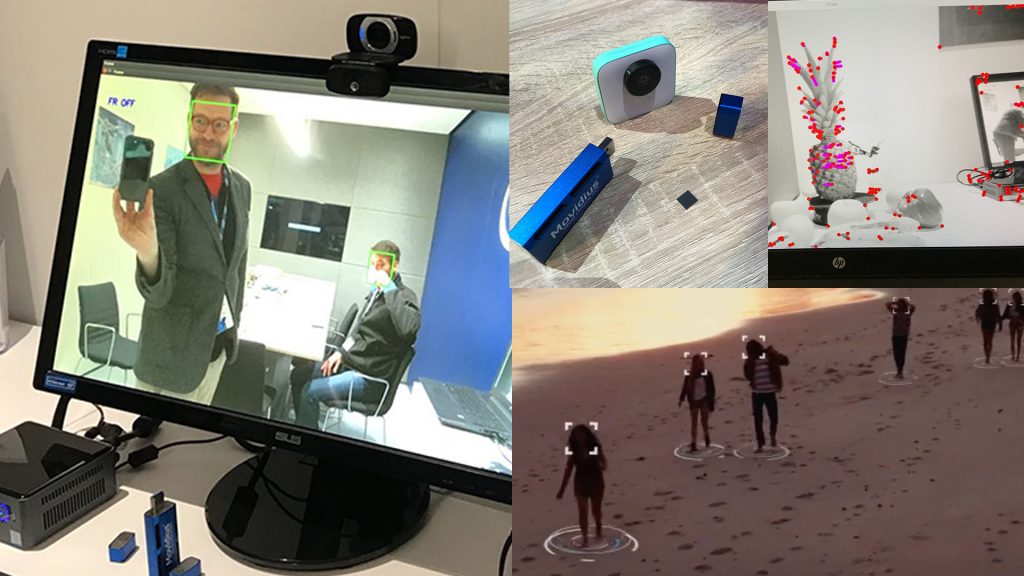
Users first.
Technology changes rapidly, but human beings don’t. It’s great to have a good understanding of tech, but it’s more important to understand people and then design around them; a primary design principle. It’s often the simple things that we remember, share and care about.
And finally…hats off to Android for once again being the only exhibitor with a sense of humour!
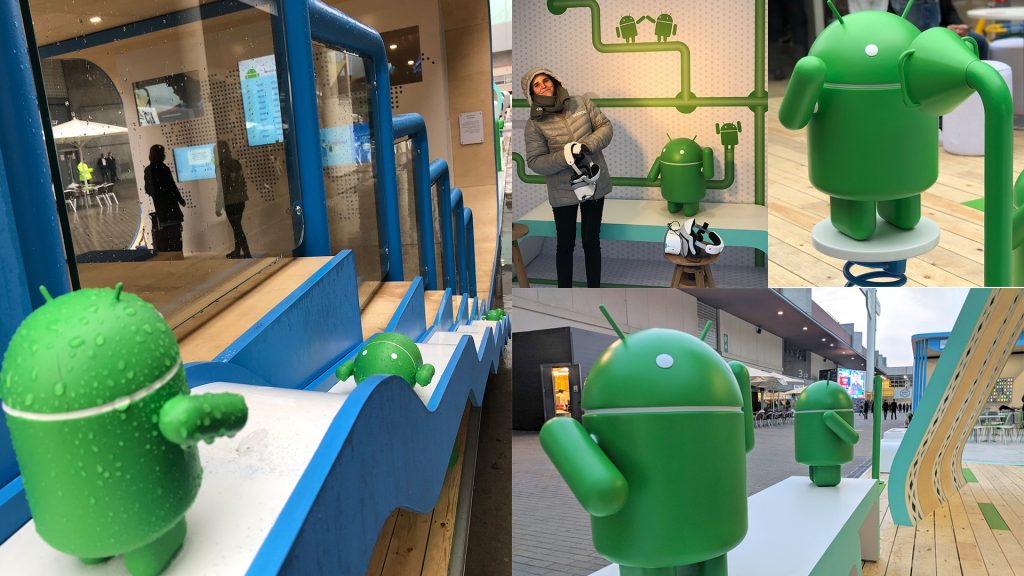
More reading: